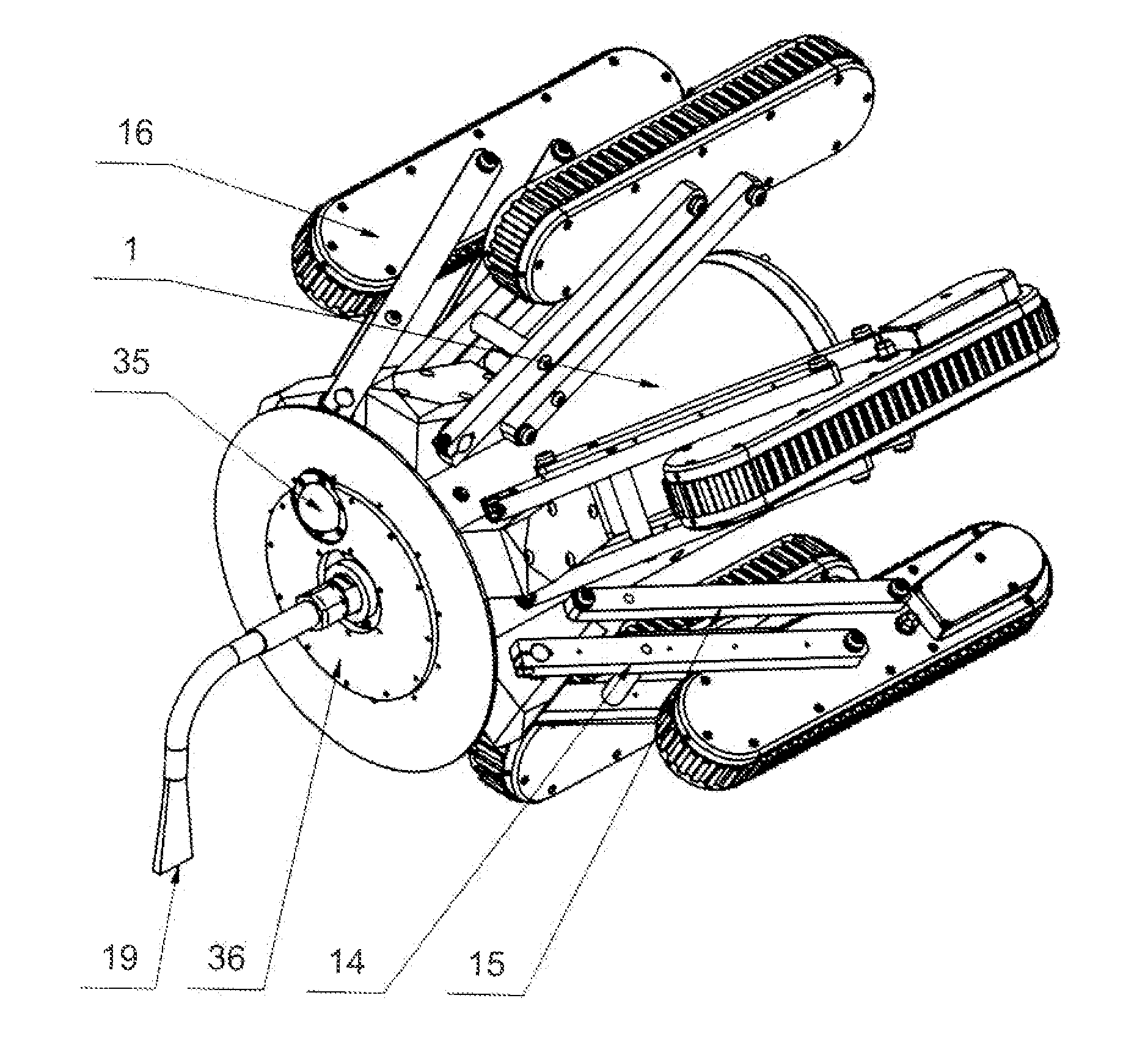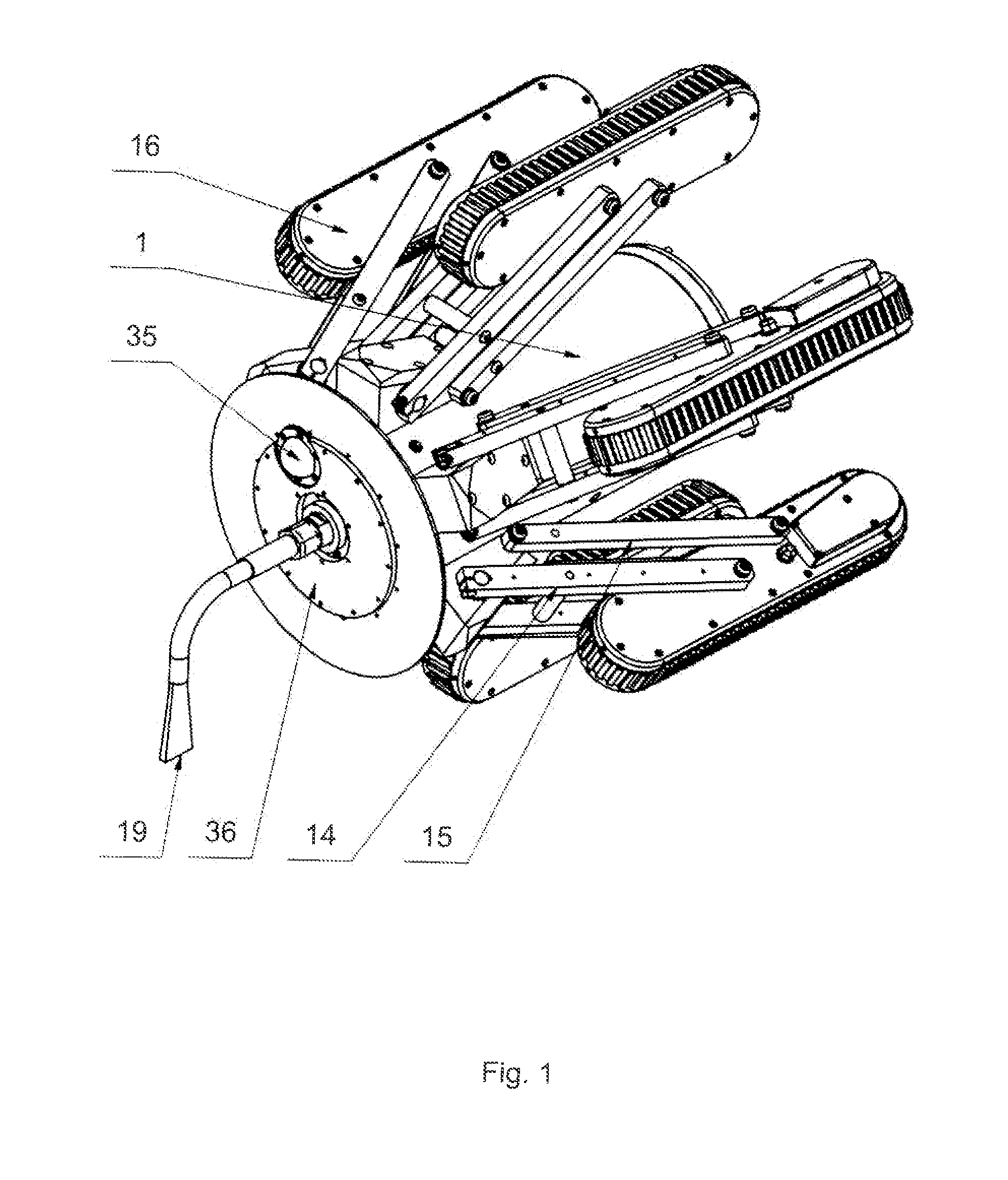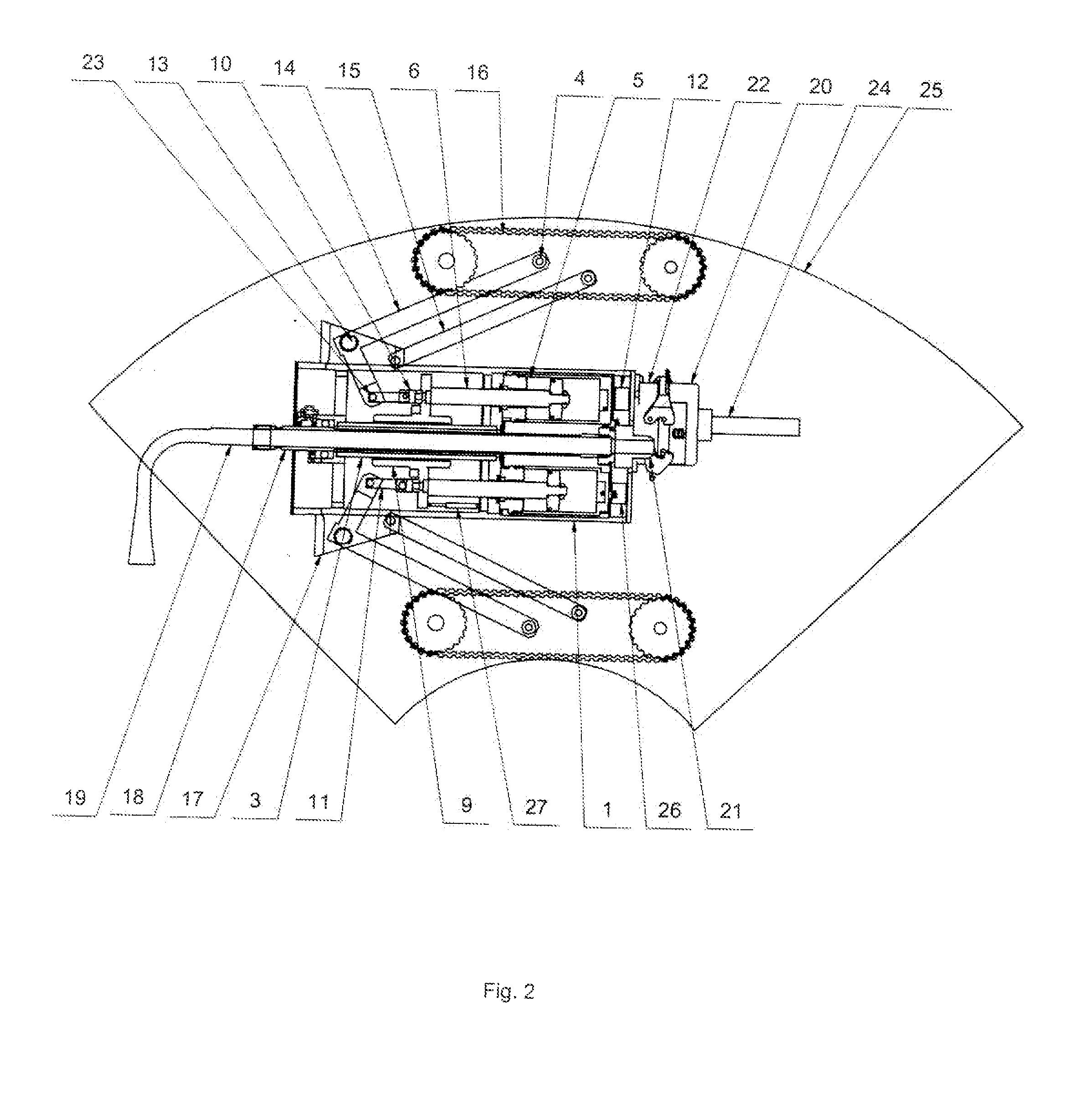Robot for cleaning and inspection of conduits and its control unit
a technology for conduits and robots, applied in the direction of cleaning process and equipment, pipe elements, hollow article cleaning, etc., can solve the problems of negative health, virtually impossible manual cleaning, and impact on its use, so as to facilitate the control of the robot and the operator's convenien
- Summary
- Abstract
- Description
- Claims
- Application Information
AI Technical Summary
Benefits of technology
Problems solved by technology
Method used
Image
Examples
Embodiment Construction
[0042]Robot for cleaning and inspection of conduits according to the presented solution, FIG. 1, 2, 4, consists of the body 1, which accommodates a hose 18 with cleaning medium, to which a nozzle 19 for cleaning medium is attached. On the front side of the body 1 are installed a headlight 36 and a video camera 35 in a way common to this type of devices. Hose 18 of the cleaning medium here passes through axis of the body 1, to which are radial-symmetrically attached minimum three driving units 16 with tracks or wheels. The robot 111 is equipped with a synchronizing mechanism formed by a rectilinear prismatic joint placed inside the body 1. This rectilinear prismatic joint consists of a guiding device 3 of the synchronizing mechanism attached to the body 1. On the guiding device 3 is placed a carriage 9, which is sliding in direction of the longitudinal axis of the body 1. Driving units 16 are attached to the carriage 9 symmetrically via identical mechanisms forming prismatic joints. ...
PUM
 Login to View More
Login to View More Abstract
Description
Claims
Application Information
 Login to View More
Login to View More - R&D
- Intellectual Property
- Life Sciences
- Materials
- Tech Scout
- Unparalleled Data Quality
- Higher Quality Content
- 60% Fewer Hallucinations
Browse by: Latest US Patents, China's latest patents, Technical Efficacy Thesaurus, Application Domain, Technology Topic, Popular Technical Reports.
© 2025 PatSnap. All rights reserved.Legal|Privacy policy|Modern Slavery Act Transparency Statement|Sitemap|About US| Contact US: help@patsnap.com



